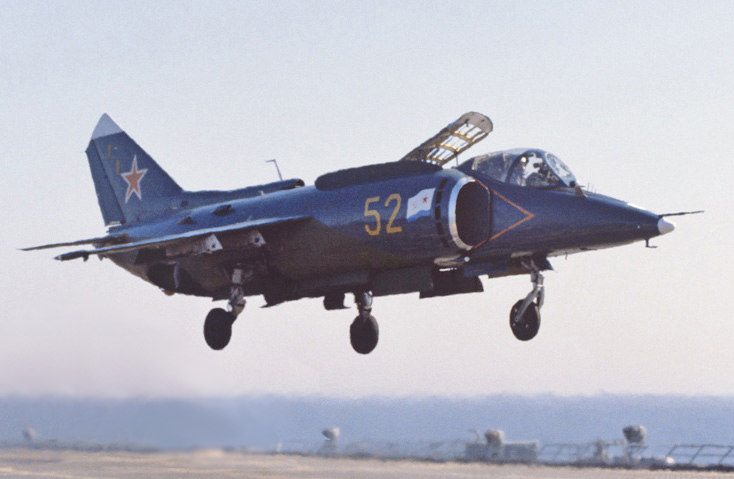✈️ Yakovlev Yak-38 “Forger” — Review
🧩 Overview
The Yakovlev Yak-38, NATO codename “Forger”, was the Soviet Navy’s first operational VTOL (Vertical Take-Off and Landing) fighter, developed in the 1970s. Often called the USSR’s answer to the British Harrier, the Yak-38 was deployed aboard Kiev-class aircraft carriers, offering the Soviet Navy a way to project air power from the sea.
But unlike the Harrier, the Yak-38 was seriously underpowered, carried a light weapons load, and was never truly effective as a frontline fighter. Still, it remains an important Cold War milestone.
⚙️ Specifications
-
First flight: 1971
-
Introduced: 1976
-
Crew: 1 (Yak-38M had a 2-seat trainer version)
-
Length: 16.37 m (53.7 ft)
-
Wingspan: 7.32 m (24 ft)
-
Maximum speed: ~1,100 km/h (680 mph, subsonic)
-
Range: ~1,300 km (combat radius ~300 km)
-
Engines:
-
1 × Tumansky R-27V-300 main engine (vectoring nozzle)
-
2 × RD-36-35 lift jets (vertically mounted for takeoff/landing)
-
-
Armament:
-
Typically 2 x R-60 air-to-air missiles
-
Up to 2,000 kg of bombs or rockets
-
No internal cannon
-
🛠 Design Highlights
-
VTOL capability: Used one main engine for forward thrust + two smaller lift engines for vertical takeoff/landing
-
Foldable wings: For storage aboard carriers
-
Ski-jump capable: Took off from short ramps on Soviet carriers
-
Autopilot ejection system: If one lift engine failed during takeoff/landing, the pilot was automatically ejected — a sign of how risky it was
⚓ Naval Role
The Yak-38 was designed specifically for operation from the Kiev-class “heavy aircraft-carrying cruisers”, which lacked the catapults and arresting gear of U.S. carriers. The Forger gave the Soviet fleet a modest fighter and strike capability at sea, filling a role no other Soviet aircraft could at the time.
📉 Performance Limitations
Despite its VTOL novelty, the Yak-38 had serious flaws:
-
Very limited weapons load
-
Poor combat range — only a few hundred km with full load
-
Weak radar or none at all in early versions
-
Couldn’t fight supersonic enemies or defend itself well
It was best used as a short-range strike aircraft or patrol interceptor, not a full fighter.
🧱 Strengths
-
First successful Soviet VTOL aircraft
-
Gave the USSR sea-based air power (even if limited)
-
Easy to operate from smaller ships and remote bases
-
Technically ambitious
⚠️ Weaknesses
-
Underpowered, especially in warm or high-altitude conditions
-
Unreliable lift engines — risky in VTOL mode
-
Poor dogfight capability
-
Very short combat radius
📜 Legacy
The Yak-38 was retired in the early 1990s, replaced conceptually by future designs like the Yak-141 (which also failed to reach production). While it didn’t achieve the same success as the Harrier, the Yak-38 was a symbol of Soviet innovation, and a major stepping stone in the history of vertical flight.
Today, a few examples survive in museums, reminding us of the USSR’s effort to match Western naval air power.
🏁 Final Verdict:
| Category | Rating (★ out of 5) |
|---|---|
| Innovation | ★★★★☆ |
| Combat Performance | ★★☆☆☆ |
| VTOL Execution | ★★★☆☆ |
| Reliability | ★★☆☆☆ |
| Naval Utility | ★★★☆☆ |
| Cold War Icon | ★★★☆☆ |

Comments are closed